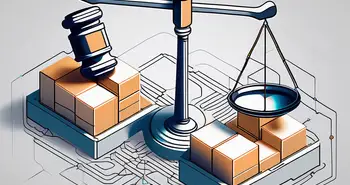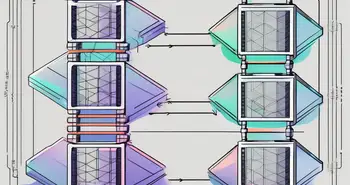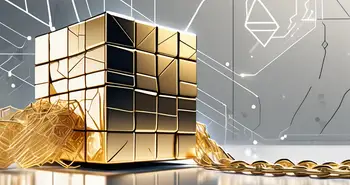Soft Fork vs Hard Fork: Understanding the Differences

In the world of blockchain technology, forks are a common occurrence. They represent a significant event that can impact the entire blockchain network and its users. However, not all forks are created equal. In this article, we will delve into the differences between soft forks and hard forks, and explore the implications they have on the blockchain ecosystem. So, let's jump right in and uncover the nuances of these two types of forks.
Understanding Blockchain Forks
Before we dive into the specifics of soft forks and hard forks, it's essential to grasp the concept of blockchain forks as a whole. Put simply, a fork in the blockchain occurs when there is a divergence in the existing chain, resulting in the emergence of two or more different chains. This fork can be either accidental or deliberate, leading to a split in the blockchain's history.
Why Do Forks Happen?
There are various reasons why forks happen in the blockchain world. Some forks occur due to technical upgrades or changes in the consensus rules, while others are driven by differences in ideology or the desire to create a separate blockchain with distinct features or improvements. Forks can also happen as a result of disagreements within the blockchain community.
The Nature of Soft Forks
Soft forks are changes to the blockchain protocol that are backward-compatible. This means that nodes running an older version of the blockchain software can still participate in the network and validate transactions. Soft forks typically introduce new rules or restrictions without invalidating previously valid transactions. They tend to be less disruptive to the blockchain network in terms of compatibility.
Defining Soft Forks
Soft forks involve adding new rules or restrictions to the blockchain protocol while maintaining backward compatibility. This means that every participant in the network can continue to operate as usual, regardless of whether they have upgraded their software or not. Soft forks aim to introduce changes that can be accepted by a majority of the network participants, thus maintaining consensus.
The Impact of Soft Forks on Blockchain
Soft forks usually lead to a temporary divergence in the blockchain until a majority of the participants adopt the new protocol. Once the adoption threshold is met, the temporary fork merges back into the main blockchain, leaving all transactions intact. The main impact of soft forks is the introduction of new rules, enhanced security measures, or improved functionality to the existing blockchain network.
The Nature of Hard Forks
Hard forks, on the other hand, are more drastic and result in a permanent divergence in the blockchain. They are not backward-compatible, meaning that nodes running an older version of the software are unable to validate transactions on the new chain. Hard forks typically involve significant changes to the protocol, often resulting in the creation of a new and separate blockchain.
Defining Hard Forks
Hard forks occur when there is a fundamental disagreement within the blockchain community. They involve making substantial changes to the blockchain protocol that are not compatible with the previous rules. As a result, the blockchain splits into two separate chains, each with its own set of rules and transaction history. Hard forks require all participants to upgrade their software to continue operating on the new chain.
The Impact of Hard Forks on Blockchain
Hard forks have a lasting impact on the blockchain ecosystem as they lead to the creation of a new and independent blockchain. This means that anyone holding tokens on the original chain will have an equal amount on the newly created chain. The original chain may continue to exist, but it is likely to lose support and become less relevant over time as the majority of participants transition to the new chain.
Key Differences Between Soft and Hard Forks
Now that we have examined the nature of both soft forks and hard forks, let's highlight the key differences between the two:
1. Compatibility Issues:
Soft forks are backward-compatible, allowing participants using older software versions to continue operating in the network. In contrast, hard forks require all participants to upgrade their software in order to participate in the new chain.
2. Community Consensus:
Soft forks aim to achieve a majority consensus within the network. This means that the majority of participants need to adopt the new rules for the soft fork to be successful. Hard forks, on the other hand, may occur due to irreconcilable disagreements within the community, resulting in a permanent split.
The Pros and Cons of Soft and Hard Forks
Both soft forks and hard forks have their advantages and disadvantages, depending on the goals and circumstances surrounding them. Let's take a closer look:
Advantages and Disadvantages of Soft Forks
Soft forks are generally considered less disruptive to the blockchain ecosystem as they allow for backward compatibility. This means that upgrades can be seamlessly implemented without requiring the entire network to adopt the new rules immediately. However, soft forks may also be seen as less democratic compared to hard forks, as they require a majority consensus to be enforced.
Advantages and Disadvantages of Hard Forks
Hard forks, on the other hand, offer the opportunity for significant changes, innovation, and the creation of new and separate blockchains. They allow for different groups within the community to pursue their own vision and implement changes they believe will improve the blockchain. However, hard forks can be highly disruptive and result in a fragmentation of the community, with the potential for contentious debates and conflicts.
As an expert in the blockchain field, I've witnessed firsthand the impact of both soft forks and hard forks on various blockchain projects. It's important to carefully consider the implications and weigh the pros and cons before deciding on which type of fork to pursue. Each fork has its own unique set of advantages and challenges, and the decision should be based on the specific goals and circumstances of the project.
Frequently Asked Questions
What is a blockchain fork?
A blockchain fork occurs when there is a divergence in the existing chain, resulting in the emergence of two or more different chains. Forks can be accidental or deliberate, and they can be caused by technical upgrades, changes in consensus rules, ideological differences, or disagreements within the community.
What is a soft fork?
A soft fork is a backward-compatible change to the blockchain protocol. It introduces new rules or restrictions without invalidating previously valid transactions. Soft forks aim to make changes that can be accepted by a majority of the network participants, allowing them to continue operating smoothly regardless of whether they have upgraded their software.
What is a hard fork?
A hard fork is a more drastic change to the blockchain protocol that is not backward-compatible. It involves making substantial changes that are incompatible with the previous rules, resulting in a permanent split in the blockchain. Hard forks require all participants to upgrade their software to continue operating on the new chain.
Which is better, soft fork or hard fork?
The choice between a soft fork and a hard fork depends on the specific goals and circumstances of the blockchain project. Soft forks are generally less disruptive and allow for seamless upgrades without requiring immediate consensus from the entire network. Hard forks, on the other hand, offer the opportunity for significant changes and the creation of new blockchain projects. Ultimately, the decision should be based on careful analysis and consideration of the advantages and disadvantages of each fork.
Now that you have a better understanding of the differences between soft forks and hard forks, you can navigate the world of blockchain with confidence. Remember to always consider the specific goals and circumstances of the project when deciding which type of fork to pursue. Happy forking!
As you consider the dynamics of soft forks and hard forks within the blockchain landscape, remember that the underlying technology continues to evolve and offer new opportunities for innovation and investment. Embrace the future of trading with Morpher, a platform that harnesses the power of blockchain to provide a seamless, zero-fee trading experience across a variety of asset classes. Whether you're interested in cryptocurrencies, stocks, forex, or even niche markets like NFTs, Morpher empowers you with fractional investing, short selling, and up to 10x leverage. Sign up today and take control of your trading journey with the added benefit of a Free Sign Up Bonus. Join Morpher and be a part of the trading revolution!

Disclaimer: All investments involve risk, and the past performance of a security, industry, sector, market, financial product, trading strategy, or individual’s trading does not guarantee future results or returns. Investors are fully responsible for any investment decisions they make. Such decisions should be based solely on an evaluation of their financial circumstances, investment objectives, risk tolerance, and liquidity needs. This post does not constitute investment advice.

Painless trading for everyone
Hundreds of markets all in one place - Apple, Bitcoin, Gold, Watches, NFTs, Sneakers and so much more.

Painless trading for everyone
Hundreds of markets all in one place - Apple, Bitcoin, Gold, Watches, NFTs, Sneakers and so much more.









